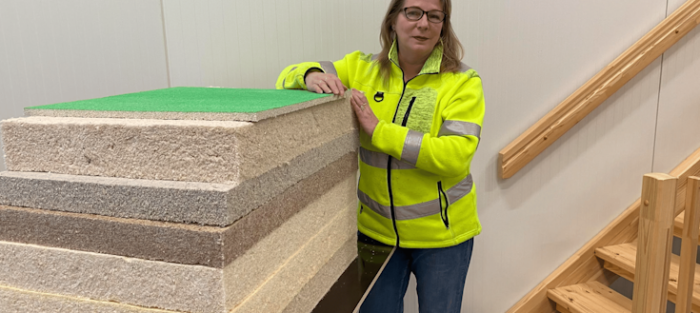Hiring a dumpster rental to discard old insulation materials
Using a dumpster rental to discard old insulation materials is an efficient method for both small and large renovation projects. You must choose a dumpster size appropriate for your project’s size so that you have enough space for all construction debris without overloading, or it will cost you more to hire two containers.
Renting a dumpster will simplify your waste disposal process, providing a convenient location for collecting old your insulation materials, such as fiberglass, foam or cellulose. This way you can keep your workspace organized and free from hazardous clutter, enhancing safety during renovations or cleanouts.
When renting a such a waste dumpster, remember to inquire about specific guidelines for insulation disposal, as some materials may require special handling due to potential health hazards. Use protective gear while handling insulation materials to avoid skin irritation and respiratory issues. Most dumpster rental services (check here https://sandyspringsdumpsterrental.org/) will offer you flexible pick-up and drop-off schedules, making it easy to manage your time and workflow.
Before starting your renovation project, use a dumpster rental to optimize your disposal process, follow local waste regulations (check here https://rules.sos.state.ga.us/gac/511-3-4), and contribute to an environmentally responsible cleanup, improving sustainability in your area.
Linen insulation materials
For more than 5,000 years, linen has been used as a raw material for various everyday products (check here https://uk.moderndane.com/blogs/the-modern-dane-blog/the-history-of-linen), for example as canvas for clothing or as flax seeds in food. The material contains natural bitter substances that make it resistant to pests, rot and mold. It is also characterized by great dimensional stability: linen insulation retains its initial volume once installed, because it does not shrink. In addition, linen is particularly easy to work with: simply cut it with scissors or a knife.
As an ecological insulation, linen wool finds a wide range of uses:
- Insulation panels
- Walls
- Ceilings
- Attic layout
- Blown insulation
- Attic layout
- Non-woven Floors
- Backfill supporting the load under floors
- Filling the space under the ceilings
- Window sealing
- Door sealing
You can easily compost linen insulation or use it as plant mulch, as long as it is made without artificial additives. This is often the case with linen fill, blown insulation, filling material, linen felt and linen strips.
Hemp, a natural insulator
Hemp is best known for making textiles, paper, oil and for medical applications, but is increasingly used in the construction sector. Ecological hemp insulation is well tolerated by the skin and can be used without generating a lot of dust. Hemp insulation materials have a positive effect on the indoor climate, they regulate humidity, have natural protection against mold and pests and offer excellent protection against heat in summer. Thanks to their natural character, they are also suitable for allergy sufferers.
Hemp insulation for
- Walls (between timbers)
- Roofs (insulation between rafters and on the roof)
- Floors
- Filling wool Insulation for walls, roofs (between rafters and on the roof)
- Hemp shives for floor construction
- Hemp nonwovens for sound insulation against impact noise
Ecological jute insulation
Jute insulation is a modern upcycling product. Although they originate from Bangladesh and India, jute insulation is nevertheless durable for the local market. Jute is produced in producing countries from a tropical plant, the Latin name corchorus (corchorus). This is transformed into jute bags which are used to transport coffee and cocoa beans and which thus arrive in America.
Recently, insulating materials have been made from these jute bags. Indeed, rather than ending up in landfill or incinerated, as was previously the case, they are recycled. Thus, jute packaging has a second life.
Jute insulation boards and nonwovens are suitable for all variants of roof insulation, for the insulation of wooden beam ceilings as well as for the insulation of exterior and interior wooden frame walls, partitions wood-framed and metal-framed walls. Jute insulation provides excellent heat protection, is mold resistant, contains no proteins or starch, and is therefore not vulnerable to insects or rodents.
Insulate naturally with sheep wool
Sheep wool is an agricultural by-product that should not be grown specifically for use as environmentally friendly insulation. This raw material has many advantageous characteristics. Its use is very varied. You can use sheep’s wool to insulate roofs, walls, ceilings, exterior facades and in log construction. Natural insulation is also suitable for acoustic construction, plant construction, insulation of technical equipment such as cooling and ventilation systems, window construction and insulation of room noise.
This natural material is distinguished by one particularity: it has an extremely long lifespan. Under normal conditions, when sheep’s wool insulation is not exposed to high UV radiation or constant humidity, it does not undergo traditional aging processes and no chemical decomposition takes place. Sheep wool as an ecological insulation also has the following characteristics:
- good thermal protection
- water-regulating
- eliminates harmful substances
- elasticity
- dimensional stability
Sheep wool insulation is susceptible to moth infestation. This is why they must be treated with sodium borate, a product that is harmless to health and the environment, which also has a flame retardant effect. This substance can, however, lose its adhesion to sheep’s wool after a few years and thus become ineffective.
Reed, a natural insulator
Reed has been used as a building material for thousands of years. It is best known in coastal regions of American states for roof coverings. Reed can also be used as ecological insulation, for example in the form of panels or mats as a plaster support. Reed mats or panels may be subject to harvest fluctuations. The material is moisture resistant, thermal and acoustic insulating. Thanks to its high weight, it has a thermo- and water-regulating effect. The reed-based insulation ensures a pleasant indoor climate. Afnor standardization provides other information on biosourced insulation.
All the above methods lead to intelligent waste management as well (check here https://dpad-magazine.com/waste-revolution-pioneering-the-city-of-tomorrow-with-intelligent-waste-management/). So let’s all provide a more sustainable America!




Comments are closed.